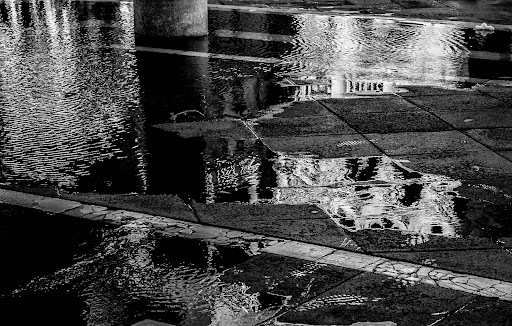Part 1: Integrative Learning
Learning Objectives
By the end of this chapter, you will be able to:
- define Integration learning outcomes.
- discuss how general education learning outcomes and skills can be integrated together, utilizing multiple areas of knowledge and multiple modes of inquiry and benefiting from multiple perspectives.
Integration courses provide the opportunity to combine what we learn in general education and major courses to think about more advanced ideas and problems. We learn how to take knowledge and skills from different perspectives and apply them in new ways. These courses also include high-impact experiential learning experience, ranging from community engagement and study abroad to independent research and internships.
![]()
By studying Integrative Learning, we can integrate and apply knowledge from different disciplines and experiences to solve problems.
While we think about different skills and areas of knowledge separately at times, especially when we take courses in subjects with specific disciplinary names, in reality, they all work together. Throughout the previous two chapters, there were notes pointing to other chapters and sections. These notes indicate some of the connections between ways of thinking that can be effective as we consider certain issues or try to address certain problems. The ability to combine knowledge and skills from different disciplines and experiences, even ones that seem on the surface to be completely disconnected, is Integrative Learning.
In some ways, Integrative Learning is the answer to the question “why do I have to take this course?” Since all learning is connected in some fashion and one type of knowledge supports and enhances another, taking different courses that develop a varied skill base is building the toolbox necessary for making applications outside and beyond the classroom. The Carnegie Foundation’s Integrative Learning Project (2007) calls “the abilities to integrate learning – over time, across courses, and between academic, personal, and community life […] one of the most important goals and challenges of higher education.” Integrative Learning allows us to transfer what we learn in one situation to others, potentially finding creative and innovative ways to connect one type of learning with another.
Most activities involve using more than one type of learning. For example, when we write, we are not simply using Writing skills. We write about a topic or multiple topics about which we need to have some familiarity (for instance, if we are writing about civics, history, literature, the fine arts, science, or wellness – or combinations of these or others). We will need to find and evaluate information to use, which is Information Literacy, and then use Reading skills to process that information. Depending on what type of evidence is needed, that might entail Quantitative Reasoning. Certain arguments will require Ethical Reasoning or an understanding of Diverse Perspectives. The writing process, including drafting, feedback, and revision, uses Procedural and Logical Thinking. If we eventually present what we have written, that involves Speaking and Listening. While most tasks do require multiple skills, some are more complex than others, asking us to use methodologies of different disciplines in conjunction with each other. Another word for this approach is interdisciplinary.
View: “The Importance of Integrative Learning”
“Integrative learning is vital because it mirrors the reality in which we all live and work on a daily basis. We break knowledge down into subjects and majors, but that’s not how things work outside of school. For example, if we want to maintain our democracy, that’s not just political science, it’s also about social media, cybersecurity, psychology, history, and philosophy. Addressing climate change can’t be done with science alone, we also need psychology, rhetoric, engineering, ethics, law, and more. This shows how integrative learning helps us apply knowledge from different subjects to real-life situations. We often discuss the importance of ‘critical thinking’ and ’21st-century skills’ and it’s integrative learning that helps us develop those. It gets us comparing, synthesizing info, and solving complex problems that require knowledge from different areas. How can we take all of the things that we’re learning across a wide variety of often very different courses and use that to build a coherent understanding of how the world works? New information comes in, and we need to adjust our understanding. So, by helping us think critically, apply knowledge, and stay open to life-long learning, integrative learning is a powerful tool for navigating our complex world.” – Dr. J.J. Sylvia, Communications Media, Fitchburg State University

Activity 6.1
- Examine the photograph above and read its caption.
- Think about how this image symbolically represents Integrative Learning.
Integrative Learning and Good, Necessary Trouble
“Professor Elizabeth Gordon of the Earth and Geographic Sciences Department [now the Environmental, Geographic, and Public Health Sciences Department] and Professor Benjamin Lieberman of the Economics, History, and Political Science Department have co-taught a course on climate change and human history for several years. The course looks at climate change from the perspective of earth science as well as its effect on human societies. The professors co-authored a textbook in 2017 that explains how climate change has created opportunities for human societies as well as risks and challenges over the centuries. It concludes by outlining the key human role in bringing about accelerating climate change. ‘It’s great to see students learn how to integrate methods and evidence from two disciplines and put together final projects that draw deeply on both science and on research on history and human societies,’ Lieberman said” – First published in Fitchburg State University Contact, Summer 2021
The climate change crisis and what we can do to counter or raise awareness about it are examples of Integrative Learning that have become more and more important in recent years. Understanding how climate change works and the evidence supporting humans’ role in it are concepts based in Scientific Inquiry and Analysis: trends in climate patterns, analysis and predictions of temperature changes, environmental impacts, etc. (note: The NASA Global Climate Change project reports that 97% of publishing climate scientists agree that humans are causing climate change). This work requires experimentation, testing, and data modeling (all of which involve Quantitative Reasoning).
At the same time, however, we have only been collecting quantitative data on climate patterns for a certain amount of time. How do we gather data from before that? Certain researchers are studying what is called the Dantean Anomaly, conditions in the early 1300s in Europe that have remarkable similarities to the peculiar “seesaw conditions”
in the same region in 2018 and beyond. These rapid changes might have been partially responsible for the Great Famine and the Plague later in the century. A member of this research project, Dr. Martin Bauch, has commented that the “inclusion of humanities research clearly contributes to a better understanding of the social consequences of climate change in the past and to drawing conclusions for the future” (Leibniz Institute for Tropospheric Research, 2021). Climatologists are beginning to turn to experts in other fields in order to understand historic climate. Literature and storytelling are particularly effective sources as people tend to describe when there is something unusual with the weather or their environment, especially if it affects crops or other seasonal activities.
As an example, Conor Kostick, an historian at the University of Nottingham, was asked by a team of scientists researching ice cores to determine if volcanic activity caused severe cold snaps in Europe to parallel their work by looking at historic documents (Gao, Ludlow, Amir, & Kostick, 2016). He remembers, “I looked through my data and gave them a list of events, based not just upon obvious reports, such as eyewitness accounts of the eruption of Vesuvius in 472 CE, but also on more subtle evidence such as reports of the sun being dim, or discoloured. And the beauty of what happened next is that these examples formed a perfect match with the new ice-core data, even though I hadn’t seen their data and had no idea which years they were interested in” (Rayner 2015). Their combined work gave more precise dates for significant volcanic activity that led to climate fluctuations.
Modern climate science can also learn ancient and medieval methods from historians and archaeologists to counter modern climate change effects. The Mountain Institute, the only international, non-governmental organization to focus on mountain communities and the environmental issues they face, learned of mostly-forgotten water regulating systems, including silt dams, water reservoirs, and canals, that were built in the Peruvian Andes starting in 1000 CE to increase the amount of available water to alleviate the effects of droughts due to climate changes. As a result, the Mountain Institute created the award-winning “Ancestral Technologies and Climate Change” initiative to restore these water systems and to replicate them in other areas.
Raising awareness about climate change is another area in which Integrative Learning can be and is applied. In 2021, the University of Massachusetts Amherst, the Augusta Savage Gallery, the Arts Extension Service, and partners in Creative Women Leading Climate Action Virtual Symposium had an open call for art of any medium – including poetry, music, short story, spoken word, performance, or multidisciplinary work, among others – for the “Creative People Leading Climate Action” exhibition, intended to be a “response to the [climate change] crisis, to envision a new world, and to motivate positive action.” The photograph below was selected for that exhibition, and it represents fears in Venice, Italy, about increasing flooding due to climate change and the damage it can do to Venice’s vast cultural heritage, including St Mark’s Basilica, which is reflected brokenly in the pools of water. This exhibition and photograph are examples of Fine Arts Expression and Analysis and Creative Thinking being used to symbolize a scientific problem.
Climate change is an interdisciplinary issue that requires Integrative Learning to address.

Discussion 6.1
- If you have already taken a course that emphasizes Integrative Learning, think about what you were asked to do and what you learned. If you have not heard about Integrative Learning before, think about the types of courses you could take.
- In what ways did or might the idea(s) or example(s) discussed above apply in such courses?
- What other ideas or examples would you add to the discussion?
Media Attributions
- Integrative Learning Icon © Kisha G. Tracy is licensed under a CC BY-NC-SA (Attribution NonCommercial ShareAlike) license
- The Giralda © Kisha G. Tracy
- Fragile Reflection © Kisha G. Tracy is licensed under a CC BY-NC-SA (Attribution NonCommercial ShareAlike) license

